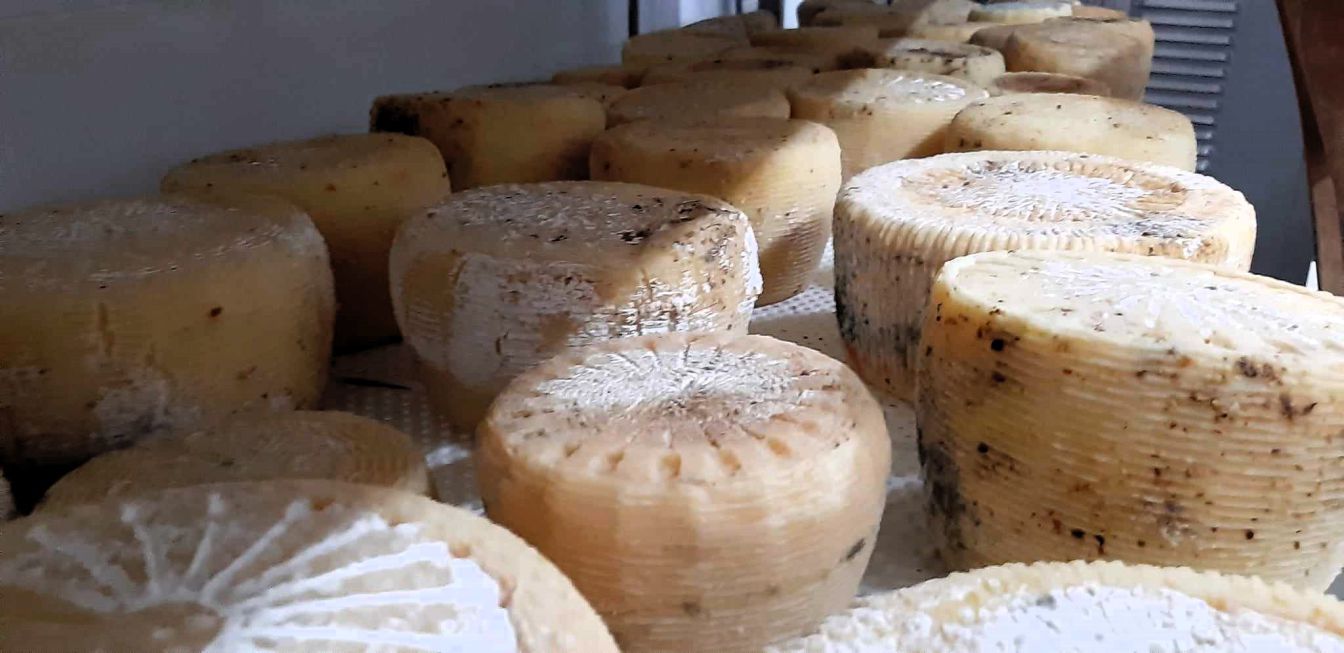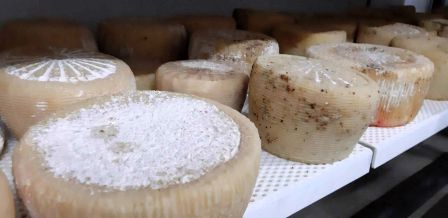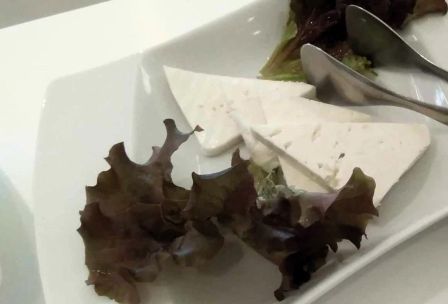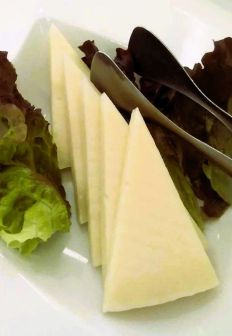Historically, cheese is believed to have come to us from the nomads of Central Asia. A myth suggests that cheese was made by mistake by a merchant who had stored milk in a sheep's pouch, and due to the heat and the natural enzymes from the interior of the pouch, the milk separated into curds and whey. When he stopped to rest at night, he discovered what had happened, and by trying the whey which was very good for his thirst and the curds for his hunger. For the ancient Greeks, who considered it one of the sacred foods, mythology states that the knowledge of cheesemaking was given by Aristaeus, the son of the god Apollo. Our homeland has a tradition of cheese-making for centuries. In ancient Greece, cheeses were adored. We have a few references to them, they had two categories, soft (fresh) or mature. Fresh cheeses were usually wrapped in dragon leaves to be preserved. Fresh cheeses were typically made of cottage cheese, goat cheese, which were sold by weight while mature cheeses were sold by piece. As Aristotle mentions, fig milk could be used as rennet. Homer has referred to cheese-making by the Cyclops Polyphemus who made cheese from sheep and goat milk, essentially making feta! As well as many other types of cheeses, as we can understand by reading the verses when Odysseus reached the cave of Polyphemus.
Excerpt from Homer’s Odyssey:
"...We then hastily arrived at the cave, but we did not find him inside; he was grazing his fat sheep in the meadow. Entering the cave we were amazed by everything: baskets full of cheeses; in the pens, lambs, and kids were groaning but they were divided amongst themselves orderly; [...].
Then my companions urge me to take as much cheese as we could and return; [...].
However, I did not listen, which would have been more beneficial; I wanted to see him and if he would be hospitable.
And
He knelt down to milk bleating sheep and goats [...].
He curdled half of the milk to make cheese and kept the other half to drink."
Today, Greece has many famous types of cheeses that we promote all over the world. Some of these are:
Anthotyro, Arseniko of Naxos, Graviera of Naxos, Graviera of Crete, Graviera of Agrafa, Armogalo, basket cheese of Lemnos, Sfella, Katiki of Domokos, Kasseri, Kefalograviera, Kefalotyri, Ladotyri of Mytilene, Kopanisti, Mastelo of Chios, Staka of Crete, Metsovone, Batzos, Myzithra, Xinomyzithra, San Michali, Manouri, Teleme, Feta, Tsalafouti, Formaella of Arachova Parnassos, and many more.
Cheeses are categorized into groups such as brine cheeses like Feta, Teleme, Sfella, Batzos, Touloumotyri, basket cheese, etc.; yogurt-like cheeses such as Tsalafouti, Katiki, Staka, Xinomyzithra, etc.; soft cheeses like the cheese from Mykonos, the stone cheese from Tinos, the Syros cheese, the cheese from Limnos, Prentza from Kefalonia, Mastelo of Chios, etc.; reprocessed cheeses like Kopanisti, Xinomyzithra, etc.; semi-hard cheeses like Formaella of Arachova, Kasseri of Macedonia, the cheese from Metsovo, etc.; and hard cheeses like Graviera of Crete, Kefalograviera of Epirus, Ladotyri of Mytilene, Arseniko of Naxos, Kefalotyri of Naxos, San Michali of Syros, etc.
In Greece, cheeses can be found in every corner of the country within food such as in pasta, vegetables, meats, pies, appetizers, in salads, sauces, risotto, and even eaten plain on a platter accompanied by fruits, various crackers, bruschetta or breadsticks, and nuts, along with exquisite wines and even in traditional confectionery, such as the Cretan 'skaltsounia'.
LATEST RECIPES
GET LATEST UPDATES
Newsletter Subscribe
FEATURED ARTICLE

GET LATEST UPDATES
Newsletter Subscribe

























































































